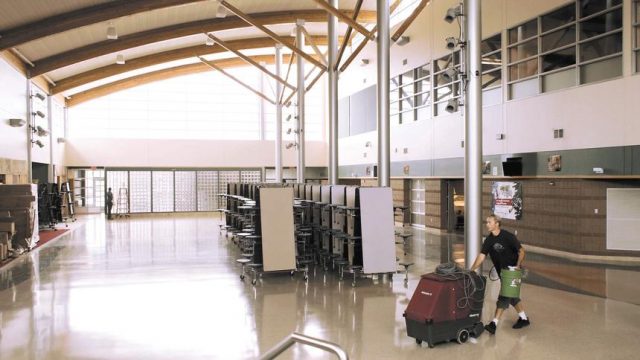Audio: Lawmaker Says Measure 2 Necessary to “Loosen up” Reserve Funds, Opponents Say Fund Will Be Raided

On my radio show yesterday I hosted a debate over Measure 2 on North Dakota’s November ballot between state Senator Tim Flakoll (R-Fargo) and Jon Martinson of the North Dakota School Boards Association.
This issue is a little bit complicated – a little bit down in the weeds – but this is an important debate worth paying attention to.
The measure – original text here, ballot language here – would give state lawmakers easier access to funds in the Foundation Aid Stabilization Fund which was created as a fiscal safety net for K-12 education. But Martinson and his organization say the Legislature is just trying to raid the K-12 education piggy bank now that revenues are tight.
Who is right? Well, it’s complicated.
First, some history on the fund.
Legislation creating it was passed by the 1993 Legislature, and voted into law by the people in 1994. It is funded by 10 percent of the state’s oil extraction tax. It can be accessed – as it was earlier this year – when falling state revenues trigger across-the-board budget allotments. Once those allotments are ordered money can be transferred from the fund to offset the allotments for K-12 funding.
Before this year the fund been tapped only once before in its history, in 2002 when $5.5 million was taken out.
[mks_pullquote align=”right” width=”300″ size=”24″ bg_color=”#ffffff” txt_color=”#000000″]”They’re looking for every dollar that they can,” he said. “This is K-12’s money,” he added.[/mks_pullquote]
Earlier this year lawmakers transferred over $116 million out of the fund to shore up K-12 education. Even after that revenues in it are pretty healthy. According to data from Legislative Council provided to me by Senator Flakoll, even after the aforementioned transfer the fund still had a more than $569 million balance as of August 31 and was projected to end the current biennium in June with over $625 million.
Measure 2 would allow lawmakers, with the permission of the governor, to tap for education purposes all of those funds up to 15 percent of whatever the previous biennium’s K-12 appropriation was (per Legislative Council, that would be $252 million in the current biennium).
Flakoll says the funds in the account have grown far beyond what is necessary to protect K-12 funding, and “loosening up” access to them would allow policymakers to be more flexible in budgeting.
Martinson, though, says lawmakers are out to raid the fund. In summary, his argument:
- the 15 percent protection is too small
- the measure has no definition of “education-related purposes” which could have lawmakers spending these funds far outside K-12 budgets
“They’re looking for every dollar that they can,” he said.
“This is K-12’s money,” he added.
In particular, Martinson said the fund could be tapped to bail out the state’s teacher’s pensions which are not currently fully funded, have been plagued by stubbornly low returns in recent years, and would probably meet Measure 2’s loose definition of “education-related purposes.”
Flakoll, during our discussion, conceded the point about pensions. “I believe it would be legal,” he said.
Who has the right of this?
Honestly, I’m on the fence. On one hand, I don’t like the idea of opening up reserve funds intended to protect education funding from the sometimes inconsistent revenues from our commodity-based economy to raids by the legislature. That these funds could potentially be used to shore up teacher pensions, and delay badly needed reforms on that front, gives me the hives.
On the other hand, I do think North Dakota has a problem with locking too much money up in too many reserve funds. Take a look at this list of government funds on the State Treasurer’s website. There are a lot of them holding a lot of money. Heck, in addition to the Foundation Aid Stabilization Fund which is the focus of this measure, North Dakota also has the Common Schools Trust Fund which has approximately $3.5 billion sitting in it.
I’m in favor of a state like ours, which must chart its fiscal course through the ups and downs of commodity prices, building appropriate reserve funds. But there’s a point at which reserves begin look like hoarding. Too much money tucked away in too many lock boxes only puts upward pressure on taxes, I think.
Still, I think Martinson and his group have the right of this. He conceded during our discussion that had the measure better defined what purposes this money could be spent for, and if it protected more than just 15 percent of K-12 funding from lawmakers, his group may have been able to support it.
I tend to agree.
Here’s the audio:




